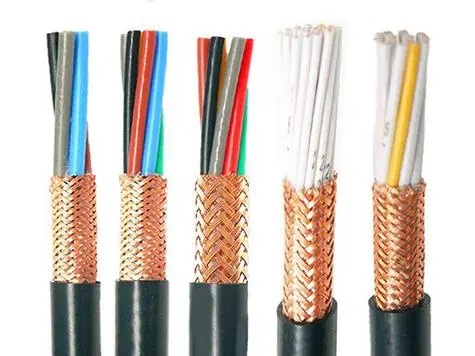Introduction:
In today's rapidly advancing technological landscape, the demand for efficient and reliable cable solutions has never been greater. Industries ranging from telecommunications and aerospace to automotive and healthcare rely on high-performance cables to transmit data and power effectively, while also ensuring protection against electromagnetic interference (EMI). One such solution that has gained significant attention is flexible shielded cable assemblies. This article explores the various advantages and applications of flexible shielded cable assemblies, shedding light on why they have become the go-to choice for many industries.
1. Understanding Flexible Shielded Cable Assemblies:
1.1 What are Flexible Shielded Cable Assemblies?
Flexible shielded cable assemblies, as the name suggests, are cables with a flexible design that incorporate shielding to provide protection against EMI. These cables consist of multiple conductive wires enclosed in an insulating material, which is further enveloped by a flexible shielding material, such as braided copper or aluminum foil. The combination of flexibility and shielding ensures that the cables can bend and move without compromising their performance or succumbing to external electromagnetic interference.
1.2 The Importance of Shielding
EMI, caused by electrical noise and interference, can have detrimental effects on the performance of electronic devices and systems. Flexible shielded cable assemblies play a crucial role in attenuating and redirecting these unwanted electromagnetic waves, thereby minimizing the risk of signal degradation or loss. Shielding also prevents the cables from emitting unwanted electromagnetic radiation, ensuring compliance with regulatory standards.
2. Advantages of Flexible Shielded Cable Assemblies:
2.1 Flexibility and Durability

The inherent flexibility of shielded cable assemblies allows them to bend and twist without compromising their electrical performance, making them ideal for applications where cable routing requires frequent movement or tight spaces. The use of high-quality materials in their construction ensures durability and resistance to wear, abrasion, and environmental factors, making them suitable for both indoor and outdoor applications.
2.2 EMI Protection
By employing shielding materials, flexible shielded cable assemblies effectively block and divert electromagnetic interference, thereby ensuring reliable signal transmission. This level of protection is particularly critical in environments where EMI sources are abundant, such as manufacturing facilities, data centers, and medical equipment installations. Shielding also helps prevent cross-talk between adjacent cables, further enhancing signal integrity.
2.3 Enhanced Signal Integrity
Flexible shielded cable assemblies are designed to minimize signal loss and maintain high signal integrity. The shielding effectively isolates the conductive wires from external interference, allowing for clean and reliable transmission of data and power. This characteristic makes them the ideal choice for applications that demand high data transfer rates, such as high-speed networking, video transmission, and industrial automation.
2.4 Safety and Compliance
Flexible shielded cable assemblies not only protect against EMI but also ensure the safety of users and compliance with industry regulations. Shielding prevents the cables from emitting potentially harmful electromagnetic radiation, reducing health hazards for individuals working in close proximity to the cables. These cables also adhere to various international standards and certifications, such as UL and CE, ensuring compliance with safety and performance requirements.
3. insulated sheathed power cable of Flexible Shielded Cable Assemblies:
3.1 Telecommunications and Networking
In the fast-paced world of telecommunications and networking, flexible shielded cable assemblies are widely employed to ensure robust signal transmission and prevent data loss. They are commonly used in applications such as Ethernet networks, fiber optic networks, and telecommunication infrastructure, where high-speed data transfer and EMI protection are of utmost importance.
3.2 Medical and Healthcare
The medical industry relies heavily on flexible shielded cable assemblies to maintain the integrity of critical medical equipment and patient monitoring systems. These cables are utilized in various medical devices, such as MRI machines, patient monitoring systems, and surgical equipment, where EMI protection and reliability are essential. Furthermore, shielded cables help ensure the safety of patients and medical personnel by preventing interference with sensitive medical equipment.
3.3 Automotive and Aerospace
The automotive and aerospace industries demand cables capable of withstanding harsh environments, intense vibrations, and extreme temperature fluctuations. Flexible shielded cable assemblies excel in these applications due to their durability, flexibility, and EMI protection capabilities. They are used in automotive applications like engine control units, infotainment systems, and vehicle wiring harnesses, as well as aerospace applications such as avionics and communication systems.
3.4 Industrial Automation and Control Systems
In industrial automation and control systems, where precision and reliability are paramount, flexible shielded cable assemblies play a crucial role. These cables are utilized in programmable logic controllers (PLCs), robotic systems, factory automation equipment, and process control systems to ensure uninterrupted communication and protection against EMI in demanding industrial environments.
4. Conclusion:
Flexible shielded cable assemblies offer a multitude of advantages, combining flexibility, durability, and EMI protection. Their ability to transmit data and power reliably while withstanding harsh environments makes them the preferred choice across various industries, including telecommunications, healthcare, automotive, and industrial automation. As technology continues to evolve, the demand for high-performance cables that can adapt to changing requirements will only increase, making flexible shielded cable assemblies an indispensable component in today's interconnected world.
